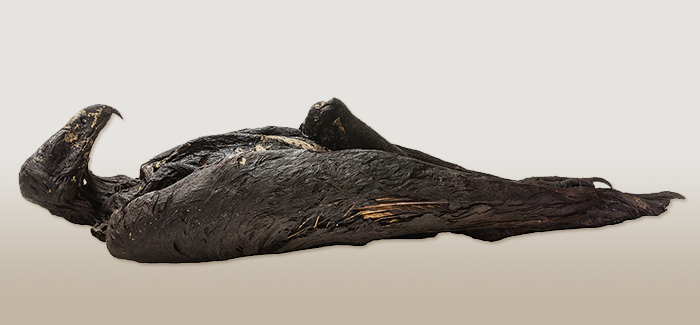
A mummified eagle, analyzed by University of Chicago Medicine radiologists and researchers at the Oriental Institute. (Photo by Anna Ressman)
The 89 mummies at the Oriental Institute include 13 humans, four cats, and a monkey paw.
There are 89 mummies at the Oriental Institute: some animal, some human, some intact, some in pieces (mostly disembodied hands, feet, and heads—“spare parts,” Egyptologist Emily Teeter, PhD’90, calls them), some on display, and many more in storage. This past spring, at the request of Chicago’s public radio station, WBEZ, Oriental Institute researchers counted up all the mummies, and from that tally, WBEZ created this graphic.
It was the first time Teeter had seen the mummy list in its entirety. “I had no idea we had a monkey paw,” she says. “That’s straight out of Edgar Allan Poe.” There are also two snakes, 29 birds, and 27 crocodiles (and six “parts of crocodiles”). “Most of them”—the crocodiles—“are this big,” Teeter says, holding her hands a foot apart. “Tiny. And so cute.” They were associated with the Nile god Sobek, whose priests would raise the crocodiles, then kill them as infants, mummify them, and sell the mummies to pilgrims. “And the pilgrims, to show their piety, would give them back to the temple to be buried in the catacombs,” Teeter says. Egyptian cults did the same thing with birds and cats—although recent CT scans can reveal ancient scams: some beautifully wrapped mummies sold to pilgrims turn out to contain not whole animals but only bones and mud.
Passing by a pair of plaster feet in the OI’s back room—“this was to put over the wrapped feet of the mummy, to give another set of feet in case something went wrong with the mummy”—Teeter notes the numerous redundancies built into every mummy and buried in every tomb, so that the dead’s every need could be met. “These guys were so intent on creating life after death, forever and ever,” she says. “All of this stuff was to create security for them.”

